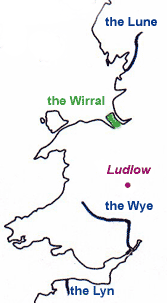|
|
|
|||||||
|
Its form shows the influence of the native alliterative tradition as well as the Continental tradition of rhyming verse; each line is subdivided syntactically into a pair of two-stress phrases, and alliteration is heavily used, although its use does not conform to the standard patterns of alliterative verse (all stressed syllables in a line may alliterate, as in 1-2, or the two halves of the line may alliterate on different syllables, as in 3). The author uses a demanding rhyme-scheme, aaaaaaaabb, and the first line of the final couplet of each stanza is linked with the previous line by the repetition of alliterating words (e.g. may and myht in 8-9). The five stanzas are also defined by their imagery: each has a separate theme, precious stones, flowers, birds, herbs and spices, and literary figures. Not all the figures mentioned in the final stanza have been identified; the most thorough discussion can be found in the notes on the poem in Brown (1932). Note: the translation of this poem (into verse, to give some idea of its formal patterning in Modern English) is relatively free, and details should be checked against the Glossary and Notes.
|
|||||||
|
|
|
|||||||
| Set up by Bella Millett, enm@soton.ac.uk. Last updated 25 July 2003 . |
 The local allusions in this poem (27, 33) suggest an origin in the
Welsh Marches, and its intricate formal structure and broad and unorthodox range of cultural
reference reflect the
meeting of a variety of traditions, English, French, Scandinavian, and
Welsh.
The local allusions in this poem (27, 33) suggest an origin in the
Welsh Marches, and its intricate formal structure and broad and unorthodox range of cultural
reference reflect the
meeting of a variety of traditions, English, French, Scandinavian, and
Welsh.